- Home
- Michael Scott
Delphi Page 32
Delphi Read online
Page 32
The Athenian Treasury (fig. 5.4): Just around the corner from the Siphnian treasury is the rebuilt Athenian treasury. Dedicated after the Athenian victory at the battle of Marathon, this treasury was rebuilt with money from the modern city of Athens in the early twentieth century. Notice how it uses the natural inclination of the hillside to become even more imposing to the visitor: its south wall literally towers over you as you move up toward it. Notice too the remains of the inscription that covered the top level of the triangular plinth in front of it, alluding to the victory at Marathon (for more details, see chapters 5 and 6).
The”Aire” (plate 2): This is easy to walk past as you continue up toward the temple. As you continue along the sacred way path in the area directly opposite the Athenian stoa, you are in an open space known today as the “aire.” Though it does not look it today, it was likely an important space at Delphi, not least because it is pretty much the only space within the Apollo sanctuary that was never built on. Instead, all the monuments around it hug an invisible roughly circular line keeping an open space at their center (the impression today is ruined somewhat by the modern sacred way path going straight through it). It was here, we think, that important parts of many of Delphi’s religious festivals took place (see chapter 10 for more details on religious festivals).
The Chian Altar (fig. 1.3): As you walk up toward the temple, you pass the Chian altar, indeed it is fairly impossible to miss. Not least because of the inscription neatly set to face visitors as they approach the altar from below telling us that the Delphians gave the Chians “promanteia”—the right to consult the oracle first—in return for the Chians’ dedicating the altar in the sanctuary in the sixth century (see chapter 5). The altar was in part reconstructed following a donation from the modern island of Chios in the twentieth century. As you pass the altar, look out also for the second inscription that runs along the top line of stone on the long side of the altar: another reminder that the Chians made this dedication.
Just before you pass by the Chian altar, you will see lots of stones lined up on your left, and also a series of structures on your right. The ones on your right are the remains of treasuries packed into this area, but you can also see one of the ancient “doorways” through the Apollo sanctuary boundary wall at this level (another indication that the modern sacred way was not the only way in and through this sanctuary). On the left, the neat lines of stones (many of them belonging to the temple of Apollo) were created by the archaeologists when excavating the sanctuary. If you wander through this area, you can peer down at different places to catch glimpses of some of the oldest buildings in the sanctuary dating to the seventh and early sixth century BC (see chapters 3 and 4), which have traditionally been associated with the mother goddess Gaia.
The Temple Terrace (fig. 1.3): The temple terrace is awash with monuments. To your right as you emerge up onto the terrace, having gone past the Chian altar, are the remains of many of the monuments associated with celebrating victory in the Persian Wars. If you search for it here, you can find the dark gray block of stone with the incomplete inscription that once belonged to the Salamis Apollo statue: potentially the first surviving inscription to mention the Hellenes, “the Greeks” (see chapter 6). Here too are the remains of the foundation of the Plataean serpent column. It was in this area that the last major excavations at Delphi were conducted, excavations that allowed us to understand some of Delphi’s earliest history (including the maison noire discussed in chapters 2 and 3).
Straight ahead as you emerge onto the temple terrace are the monuments offered by the Sicilian tyrants in the early part of the fifth century BC (see chapter 6), as well as a number by later Roman dedicators. But most imposing is the temple of Apollo itself with its Corinthian-style ramp leading up to the front entrance of the temple. The temple you see is the one built in the fourth century BC (see chapter 7) and later restored by numerous Roman emperors. If you walk along the long side of it, you see the northern retaining wall and lots of travertine garnishing the wall (a telltale sign of the unstable geology of the area), which can also be glimpsed by going to the far end of the temple, aligning yourself with its foundation wall, and looking back. You will be able to see a strong bend in the line of the foundation blocks leading away from you that has been caused entirely by seismic activity over the centuries, forcibly buckling the once straight line of the temple’s foundations (I thank Professor Iain Stewart who first pointed this out to me).
The Theater (plate 2): Taking the modern stairway (which leads you technically outside the boundary wall of the Apollo sanctuary), you climb to the north terrace of the Apollo sanctuary and reenter through its theater. This stunning piece of construction in such difficult terrain provided a permanent home for Delphi’s famed musical contests as part of its Pythian games, and also served as the meeting place for the assembly of the polis of Delphi in the Roman period. It is also at this level that you get an excellent view of the temple, parts of the lower sanctuary and of the valley below Delphi.
The Stadium (fig. 11.2): It is a fairly long climb up to the stadium but well worth it. Due to recent rockfalls it has been closed off to visitors in recent years, but you can still get a good view of the whole structure by heading to the far end of the stadium and using the natural raised bank to look back at the ensemble. And on the way back, be sure to look out for the inscription set into the walls of the stadium, which describes an important ancient regulation for stadium use: that wine could not be taken out of the stadium (because it was sacred property used as part of the religious rituals undertaken before the athletic competitions).
THE MUSEUM
Outside the Museum (fig. 11.3): Before you take the ramp up to the museum entrance, look for the giant sarcophagus of Meleager, which was one of the earliest finds at Delphi, discovered in the period before the big dig (see chapter 12); it stands as testament to the wealth of Delphi in the second century AD (see chapter 11). The evidence suggests it was reused for an incredible fifteen further burials between the second and fifth centuries AD).
The Entrance (cover): Take a moment to look at Albert Tournaire’s extraordinary 1892 drawing of Delphi at its height: it gives you a good sense of the packed nature of the Apollo sanctuary. All the items in the first room link to some of Delphi’s earliest history, including the Cretan shields on display and the huge cauldrons (tripods).
Room III (figs. 3.1, 12.5): Greeting you in this room are the “Argive twins,” often referred to as Cleobis and Biton. We know relatively little about the sculptures apart from the fact they seem to have been made in an Argive style and dedicated at the sanctuary early in the sanctuary’s history. But many would like to believe they represent Cleobis and Biton, who helped their mother who in turn prayed to the gods to give them a great blessing, whereupon they died in their sleep. The god’s explanation: it was a great blessing to die at the height of their prowess and fame as good sons.
Don’t miss the “metopes” (carved stone squares) on the walls of this room. These were found in the Sicyonian treasury, which originally stood back to back with the Siphnian treasury. More precisely, they came from the floor of the Sicyonian treasury. As we saw in chapter 5, every piece of two previous Sicyonian monuments was dismantled and built into the foundations of the new Sicyonian treasury in the late sixth century BC. It is purely thanks to that preservation decision—these metopes were laid sculpted side down as floor tiles in the new treasury—that they have survived for us today.
Room IV (plate 5; fig. 4.2): Here, kept behind glass because of its fragility are the remains of the cache of dedications found buried beneath the sacred way in the vicinity of the aire. Many show signs of fire damage and seem to have been buried there as part of one or more reorganization of the sanctuary in the sixth and fifth centuries. The ivory and gold (chryselephantine) statues of, we think, Apollo are extremely rare. But to me the most incredible is the re-created silver bull statue on display in the room. Archaeologists and conservators have painstakingly
re-created the hundreds of smashed and damaged fragments to offer us at least something of this wonderful dedication, offered by an Ionian dedicator in the sixth century BC (see chapters 4 and 5). Notice how the sheets of silver were fastened together using the strips of metals and hundreds of nails, covering a wooden frame.
Room V (figs. 4.1, 5.3, 5.4): This is for me the best room in the museum. As you enter, the marble door frame of the treasury of the Siphnians is on your right: the intricate marble work gives you a great sense of how beautiful and ostentatious this treasury must have been. Right next to it is the Sphinx of the Naxians. This would have stood near the Athenian treasury on the site and originally atop of a high column. But its height in the museum allows you to see the sculpture in much more detail. A beautifully sculpted piece from the sixth century BC (see chapters 4 and 5), the mystery of the creature that is the sphinx (part human, part animal, part bird), the sphinx mirrors the mystery of Delphi itself.
But perhaps most extraordinary in this room are the pedimental sculptures and frieze reliefs belonging to the treasury of the Siphnians. These were the crowning achievement of the structure, carved in Parian and Naxian marble, the constituency of which allows for delicate and intricate carving without the danger of the marble shattering (which the Siphnian marble used for the walls of the treasury could just not compete with). Notice the incredibly complex carving of the “gigantomachy” scenes (the battle of gods and giants), and in particular, my favorite, the lion sinking his teeth into the fighters. But notice also the very obvious difference in carving style between the frieze on one wall and on the other (very obvious if you look at the horses’ tails in the other frieze). Whereas the gigantomachy is carved in the round so that a wonderful 3-D effect is created from whichever angle you look, the horses’ tails are simply drilled back into the stone at a straight angle. Scholars have often argued that two different sculptural teams were working on the frieze, and each seems to have responded to how their section of sculpture would have been seen. The gigantomachy was placed on the north side of the treasury—the side everyone walks past as they walk up the sacred way. As such, people could see this sculpture from a number of different angles. But the other frieze, on the south side, was right up against the sanctuary boundary wall and could only be seen from more of a distance and, so, responds to that by being sculptured in a technique that works best only from a frontal viewpoint.
Room VI (figs. 5.1, 7.1): In this room are displayed the remains of the pedimental sculpture of the temples of Apollo from the sixth and fourth centuries BC. Look, right by the entrance, for the fourth-century statue of Apollo, which once sat (Apollo is represented sitting almost hunched on his oracular tripod) in the middle of the east pediment of the temple. Likewise, look for the statue of the god Dionysus, which once adorned the west pediment of the same temple.
Room VII (fig. 5.4): This room contains the remaining metopes of the treasury of the Athenians. They all display the heroic labors of either Heracles or Theseus. These two heroes were brought together for the first time, here on the treasury of the Athenians at Delphi, in a single sculptural unit (i.e., in the same building). Heracles was a mythical hero well-known throughout Greece. He was also extremely popular as a sculptural subject at Delphi in the sixth and fifth centuries BC, not least because of the mythical story that he tried to take Apollo’s oracular tripod from him. But Theseus was very much an Athenian hero. In bringing Heracles and Theseus together in this building, many scholars have argued that the Athenians were attempting to raise up Theseus to the kind of national, and international, renown that Heracles already enjoyed. They were in short trying to make Theseus a man as famous as Heracles, and, as a result, making a statement about the glory and importance of Athens in the ancient world.
Room VIII (fig. 5.4): Above all in this room, your eyes are drawn to the stones etched with writing. The marble blocks come from the wall of the treasury of the Athenians, and the inscriptions are the words and musical notations for a hymn sung in praise of Apollo as part of an Athenian festival procession (the Pythaïs) to the sanctuary in either 138 or 128 BC (see chapter 9). This hymn, when it was first discovered as part of the initial “big dig” at the sanctuary in the late nineteenth century quickly became world famous and was “played” in Greece and around the world.
Room XI (figs. 1.3, 2.1): This room contains a number of important sculptures, but particularly the “acanthus dancers.” This monument, originally a high column placed on a base to the north of the temple terrace in the Apollo sanctuary, was topped by a number of carved dancers and acanthus leaves supporting a copy of the omphalos—the stone that sat in the temple at Delphi and supposedly marked the center of the world. It was erected, we think, in the fourth century BC by, it is often argued, the Athenians (see chapter 8).
Room XII (fig. 11.1): This room contains some of Delphi’s Roman period history. Most striking is the statue of Antinous, dedicated at Delphi as part of the establishment of a religious cult to Antinous following his mysterious death in the Nile. The cult was established by the Roman emperor Hadrian in memory of his dear friend and onetime lover. But also visible in this room is the sculptured relief that went on the monument dedicated by the Roman general Aemilius Paullus after his stunning victory over Greek forces at the battle of Pydna in 168 BC. Paullus took over the monument the Greek commander had planned to dedicate at Delphi, carved this war relief on to it alongside an inscription in Latin, and put a statue of himself on top (see chapter 9).
Room XIII (plate 6): This room contains Delphi’s crown jewel: the original bronze Delphic charioteer found buried in the terrace just to the north of the temple. It was part of a much larger group: the charioteer stood in a bronze chariot with life-size bronze horses and a servant holding the reins. The image depicts the calm just before the start of a race in which this charioteer was the victor, thus giving the owner of the horses the right to put up a monument to his victory in the sanctuary. The owner in this case was the Syracusan tyrant Hieron, the occasion that of the Pythian games in the first half of the fifth century. The dedicating inscription for this monument also survives and shows that it was rededicated some years later by Hieron’s successors on the occasion of their own victory (see chapter 6).
The find is fascinating because it is so rare to have original bronze statues from the Greek world. Bronze is a precious metal and most bronze sculptures were melted down at some point in antiquity so that their metal could be reused. It is only when the sculptures were hidden from view (either buried like the charioteer or at the bottom of the sea following a shipwreck) that they are likely to have survived to us today. Notice also the rich and expensive detailing of the charioteer’s face: the inlaid teeth, eyes, and eyelashes, all in expensive and precious materials.
Room XIV (fig. 10.1): Don’t leave without finding the bust of what is thought to be Plutarch that sits at the exit of the museum. As we saw in chapter 10, Plutarch was a priest of Apollo at the sanctuary and one of our most important sources for understanding the sanctuary, its festivals, and its oracle. Here, too, on display are some elements of Delphi’s Christian history, particularly lamps decorated with Christian symbols. There is also a very useful 3D model of the Apollo sanctuary made by the Greek archaeological service.
IN THE MODERN TOWN OF DELPHI
If you have time, it is worth heading into the modern town of Delphi. In the entrance to the town hall on the main street, you can find another 3D model of the Apollo sanctuary created by the French excavators in the 1990s.
If you take the upper road and follow it around to the right, you will come across some miniature versions of the famous monuments from the sanctuary, in particular the Plataean serpent column (inscribed with the names of the city-states that fought in the Persian Wars) and the Messenian and Naupactian triangular column.
For the more adventurous, continuing on this road up the mountainside leads you eventually to the start of the ancient pathway that linked the sanctuary of Apollo to the Co
rycian cave 800 meters above Delphi on the high plateau of the Parnassian mountains (fig. 0.2).
ABBREVIATIONS
ABSA
Annual of the British School at Athens
Ael.
Aelian
VH
Varia Historia (Various History)
Aeschin.
Aeschines
In Ctes.
Against Ctesiphon
Aesch.
Aeschylus
Eum.
Eumenides
Agora
The Athenian Agora: Results of excavations conducted by the American School of Classical Studies at Athens. Princeton
AION(archeol)
Annali di Archeologia e Storia Antica
AJA
American Journal of Archaeology
AJPh
American Journal of Philology
Anth. Pal.
Palatine Anthology
Apollod.
Apollodorus
App.
Appian
Ill.
Illyrian Wars
Mith.
Mithridatic Wars
Apul.
Apuleius
Met.
Metamorphoses
Ar.
Aristophanes
Av.
Aves (Birds)
Eq.
Equites (Knights)
Nub.
Nubes (Clouds)
Plut.
Plutus (Wealth)
Vesp.
Vespae (Wasps)

 The Warlock
The Warlock The Necromancer
The Necromancer Tom Cringle's Log
Tom Cringle's Log Delphi
Delphi The Magician
The Magician La mort de Jeanne d'Arc (trad. privee)
La mort de Jeanne d'Arc (trad. privee)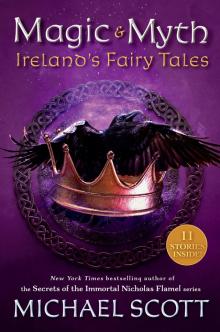 Magic and Myth
Magic and Myth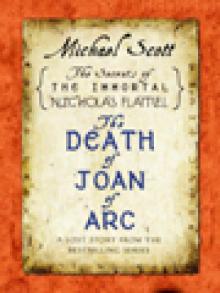 The Death of Joan of Arc
The Death of Joan of Arc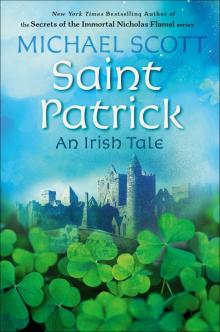 Saint Patrick
Saint Patrick Aoife and Scathach, Shadow Twins
Aoife and Scathach, Shadow Twins Machiavelli
Machiavelli The Ballad of Black Hawk and Billy the Kid
The Ballad of Black Hawk and Billy the Kid The Sorceress
The Sorceress Nicholas and the Krampus
Nicholas and the Krampus The King of the Birds
The King of the Birds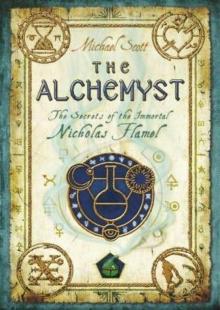 Nicholas Flamel 1 - The Alchemyst sotinf-1
Nicholas Flamel 1 - The Alchemyst sotinf-1 Shakespeare- a Complete Introduction
Shakespeare- a Complete Introduction 06 The Enchantress
06 The Enchantress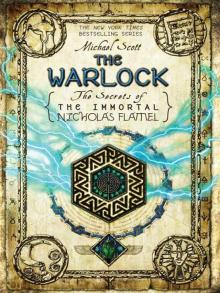 05 The Warlock
05 The Warlock The Nameless City
The Nameless City The Necromancer sotinf-4
The Necromancer sotinf-4 Mirror Image
Mirror Image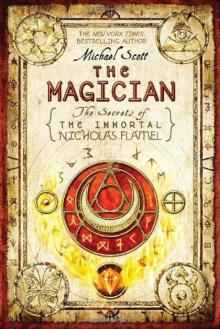 Nicholas Flamel 2 - The Magician sotinf-2
Nicholas Flamel 2 - The Magician sotinf-2 The Sorceress sotinf-3
The Sorceress sotinf-3